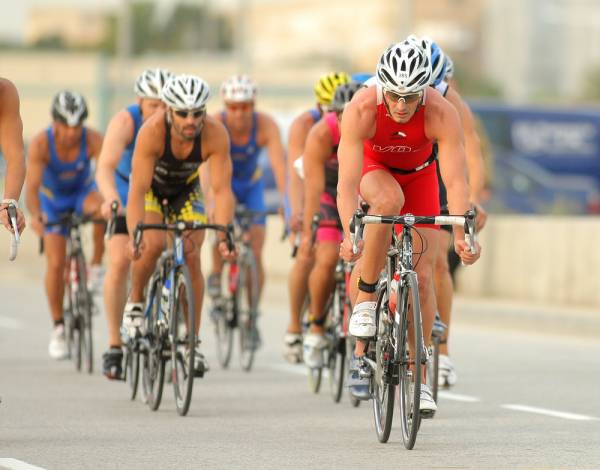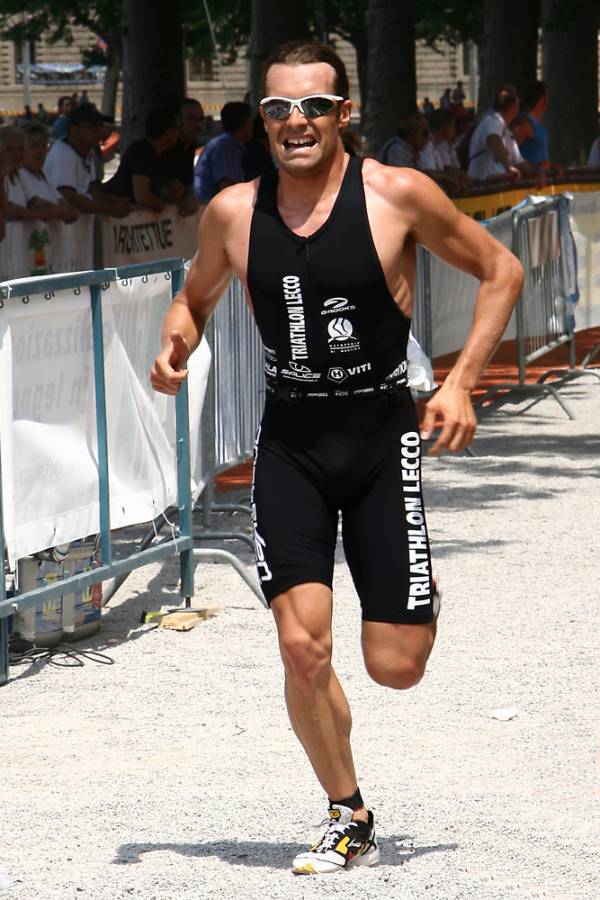In a world slowly dying of boredom there are few real challenges left. Life is so safe. With no real predators to worry about, food and shelter so easy to find, and most activities taken care of with push-button ease, it’s no wonder we are turning to more and more extreme hobbies. Many of these hobbies involve some form of endurance activity – whether marathon, triathlon, adventure race, or mud run, these events are growing fast in popularity. Triathlon is the fastest growing sport in the world and Tough Mudder has seen exponential global growth over just the last twelve months.
Many people use these events as a catalyst to change their lives and morph from couch potato to coach. The problem I see lies in their method.
I’ll pick on myself for a moment here to illustrate my point. When I embarked on my own Ironman triathlon adventure I obviously had to start swimming, riding, and running. I was already swimming and riding but the running was new. I would never consider myself as someone who was a happy runner even at my fittest. I did it because I had to for something else. There has never been a time when I was dying to go for a run the way I sometimes am with swimming.
About twelve months ago I started running. I made sure to keep my runs low intensity and slowly work some specific run fitness into my body. In my case, just developing enough resilience in my calves took about seven months. As I started to get more comfortable running I started to extend my distances until I was running for two hours.
But I’ve never really run any faster. All I did was learn to go longer and suffer for more time. Given triathlon is a sport essentially based on who can suffer the most that is actually important, but it’s also a race and the best time wins. So running long but slow isn’t going to get me much.
I recently receiving an email from a friend asking a question about a client of theirs suffering this exact same problem. The client has no problem going long and has marathons and an Ironman planned for the next twelve months. But this is where it starts to get funny. Even though this person has the exact same issue as me – not very fast – he cut massive amounts of time off his latest triathlon by adding in some intensity.
I’m going to use the word intensity because I believe it better characterizes what I’m speaking about. I’m talking about work that is of a higher intensity than normal. This can actually come in two forms – resistance and strength training or speed work. Both are ways to add intensity to training for an endurance event.
Despite both of us coming from different backgrounds, this client and I ended up needing the same thing – we need to go faster. At this point we’re actually quite similar. I’ve got a long history of strength training and minimal distance work where this other person has a big distance background but limited strength work. Right now we’re both doing a little bit of strength work – just enough to see a difference – but it’s the speed work that is missing. By his coach’s admission he’s been coasting in training. Well, that bit is different, as I’ve been busting a gut trying to get faster but I just don’t have any real speed.
Here’s the truth: The only way to get faster at swim/bike/run is to swim/bike/run faster.
Here’s how to do that:
 For starters, despite your long-term goal of something like an Ironman or a marathon you need to focus on a smaller short-term goal. Ideally I would have had enough time to work over a winter and build to a fast half marathon. Something in the 1.35 range would be about right. (Please go here and type in that time to see how it translates to all possible splits). You’ll see that gives me a possible 3.21 marathon and an easy training pace of 5.34 min/km.
For starters, despite your long-term goal of something like an Ironman or a marathon you need to focus on a smaller short-term goal. Ideally I would have had enough time to work over a winter and build to a fast half marathon. Something in the 1.35 range would be about right. (Please go here and type in that time to see how it translates to all possible splits). You’ll see that gives me a possible 3.21 marathon and an easy training pace of 5.34 min/km.
The problem is I run about 6 min/km as my easy training pace. You’ll see that pushes me out to a 4.30+ marathon and is why I used that as my goal time when I wrote about it here. That 30 secs/km is worth an extra hour and twenty minutes of suffering on the course.
To get fast we need to train faster, and that means significantly reducing the length of distance you train over. This is why great runners, swimmers, and cyclists all do some type of interval work, as it allows them to focus on above race paced efforts. Over time the body adapts and gets more comfortable at the higher speed and your easy pace increases. Elite runners have spent years on this, which is why they can cruise at astonishingly fast paces.
In the pool this means you need to get strong, and the best way to do that is with 25m intervals. Forget longer stuff until you can hold desired race pace for even a single 25m length. Aim for holding that pace over your race distance, but broken up into intervals (for instance, if your race is going to be 1500m of swimming you’d need to be able to hold that pace for 60x25m). Because you get to rest in between each lap and the distances are short, you’ll build up strength and speed quickly. This is ideal off season training as you can forget about scheduling a longer steady-paced swim and just focus on all out every time. (Which is how all swim training should be anyway.)
 On the bike the best way to get speed is hills. An easy way to do this is simply sprint up every hill you find on your regular rides. It sounds too easy but let me tell you after you’ve done half a dozen for the first time and your legs fail to respond as you push for the rest of your ride you’ll see what I mean. If you don’t have hills available, then you can simulate hills with big gear riding. Select a gear that is two bigger than you’d normally ride and push as hard as you can for five-minute intervals. Do not change down if the road rises, just push harder (as Greg LeMond said, “It never gets any easier, you just push harder.”)
On the bike the best way to get speed is hills. An easy way to do this is simply sprint up every hill you find on your regular rides. It sounds too easy but let me tell you after you’ve done half a dozen for the first time and your legs fail to respond as you push for the rest of your ride you’ll see what I mean. If you don’t have hills available, then you can simulate hills with big gear riding. Select a gear that is two bigger than you’d normally ride and push as hard as you can for five-minute intervals. Do not change down if the road rises, just push harder (as Greg LeMond said, “It never gets any easier, you just push harder.”)
Running is probably the most painful place to try to find speed. Nothing in the world is as painful as running as fast as you can and trying to hold it. But to run faster, you need to run fast and learn to put up with it. To me, a large part of running fast is pain tolerance. Marathon great Rob de Castella told me that a key speed session for distance contains 3-5 x 1km intervals done at above race pace (in my case he suggested 5 min/km). I’ve done this and it’s awful. But over a few months it will start the process of turning you into a faster runner.
The key to remember is that a lot of intensity will destroy you if you’re logging a lot of hours. A little bit goes a long way, so be judicious in using it. I advise people that to get fast they need to have one fast run and one hard ride per week, as well as every swim being hard. Don’t make the mistake of just adding distance. If you’re an experienced runner add some speed work and intensity in and watch your times drop.
Photos courtesy of Shutterstock.






